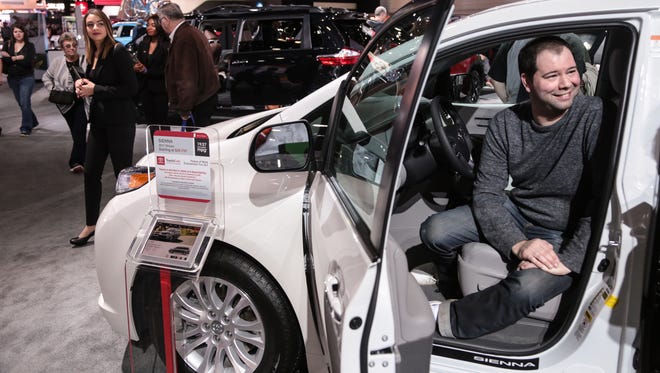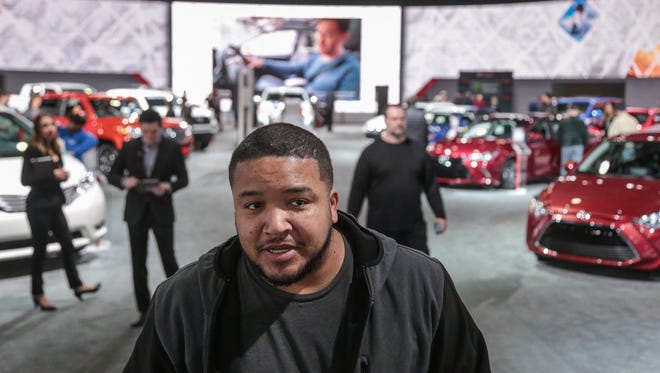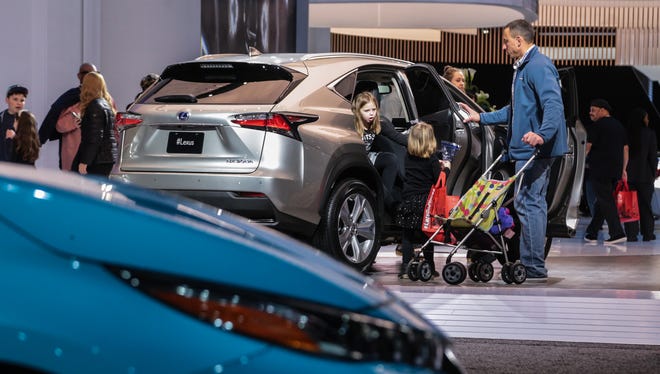Is 400 a Month Too Much for a Car
- Counselors at GreenPath say aim to spend 15% of income on transportation, including car insurance.
- About 40.7% of new car loans are in the 61 month to 72 month range, Experian says.
- Payments on a $20,000, five-year car loan would be about $371 a month with a 4.3% rate.
Will sticker shock — coupled with three rounds of possible interest rate hikes in 2017 — drive more consumers out of the new car market?
As the auto industry comes off back-to-back record sales years, some auto experts are questioning how high sales for new cars and trucks can grow given existing challenges and expected new higher-rate hurdles in 2017.

Consumers are dealing with a world where some costs are going up far faster than many incomes. As interest rates go up, the cost of existing debt on credit cards and other variable rate loans will go up, as well.
Before shopping for a new car, SUV or truck, it is becoming more important than ever to start out asking: What exactly can I afford? What's a reasonable monthly payment? What other costs do I need to consider? And, really, how long do I expect to hold onto that new vehicle?
"A lot of cars here today are 50-grand or more. Most people can't afford that," said Ryan Fortenbacher, 35, who was visiting the North American International Auto Show floor at Cobo Center in Detroit on Tuesday. The Detroit auto show runs through Sunday.
"What you used to be able to get for $20,000 is now $30,000."
Read more:
Bad credit? Jumping into a bad car loan could be easy
Michigan puts brakes on illegal auto title loans
Fortenbacher, a real estate agent from Columbus, Ohio, said he and his partner, Mark Fischer, pay $260 a month for a Volkswagen Jetta and $360 a month for a Toyota 4Runner.
The Toyota is a three-year lease, he said, because it would have cost nearly $700 a month on a five-year car loan for the $38,000 SUV.
The Jetta has a 72-month loan at 0%.
"If you asked me 10 years ago, I would never have done that," he said, referring to the six-year car loan. One risk of a lengthy car loan is that you can owe far more than the car is worth if you want to unload it before you pay it off.
On average, consumers are paying $495 a month for new car loans based on data for the third quarter of 2016, according to Experian. That's up from $447 in 2008.
By contrast, the average rate on a new car loan was 6.14% in 2008, compared with 4.69% in 2016.
"We've seen a pretty sizable increase in monthly payments in the last eight years," said Melinda Zabritski, senior director for automotive finance for Experian.
"We certainly do have a market that's becoming increasingly more expensive."
Consumers on average financed $24,060 for a new car in 2008, compared with $30,022 for the third quarter last year, according to Experian's data.
Some of the higher debt can be explained by higher sticker prices; added technology drives up overall costs, too.
Pedro Andino, 39, said what people pay for each month depends a lot on the all the gadgets on new cars and trucks.
Andino, who runs a tree service business and pays $900 a month for a 2014 Dodge Ram, says his truck is 3 years old and he honestly is still not sure how to use some features.
The popularity of pick-up trucks and crossover utility vehicles or CUVs plays into the picture when it comes into bigger average new car payments.
Back in 2008, the No. 1 spot for new car sales was small economy cars, Experian's Zabritski said. Next, was the mid-range car and then the full-size pick-up truck.
Now, the No. 1 spot is a more expensive, entry-level CUV, such as a Toyota RAV4, Honda CR-V or Ford Escape, she said. No. 2 is the pick-up truck, then the economy car.
The average loan on an entry level CUV was $25,966 from January through November 2016 — roughly $5,128 more than for a small economy car.
The average loan on a full-sized pick-up: $39,039.
Zabritski pointed out that the average new car loan rate for an economy small car was 7.39% last year through November — reflecting that the price point attracts more subprime borrowers who face higher than average rates due to bad credit. The average payment: $363 a month.
Read more:
Borrowers with bad credit could be more on edge in 2017
Record number of car buyers 'upside down' on trade-ins
Get ready to pay more for some bills when rates go up
While many experts say the auto industry can keep selling at these levels or a slightly lower pace, some experts are wondering if a road block could be reached soon.
"We believe car affordability is holding new car sales back," said Michelle Krebs, senior analyst for Autotrader.
U.S. consumers bought a record 17.55 million new cars and trucks in 2016 — up from 17.47 million in 2015. But those sales are not that far off from the old record level of 17.35 million sales hit in 2000.
Krebs said if one looks at the growth of the adult population, it's theoretically possible that the industry could have sold another 3 million units or so in recent years.
In 2000, the U.S. had 210 million people over the age of 18 years old. By 2015, the country had 248 million people over age 18, she said.
So essentially, it took 38 million more people to reach something close to in 2000, she said.
"Why aren't we selling 20.5 million new vehicles?" Krebs asked. "Affordability. In our recent survey of consumers we asked: 'Why do you think you may not own or lease a new vehicle in the future?' Fifty-seven percent said they could not afford it."
Most auto industry experts are forecasting that new car and truck sales will be robust this year, even though the Federal Reserve has indicated that three interest rate hikes could be ahead in 2017.
"The U.S. auto market is expected to remain healthy through the decade," said Stephanie Brinley, senior analyst for IHS Automotive in Southfield.
Brinley, the featured speaker at the CFA Society of Detroit meeting in January, said it's hard to judge how much car sales might have been held back by affordability issues.
"While the average new car prices has continued to increase, there remains a long price ladder for the U.S. market and a healthy used car market," Brinley said.
"This means that pricing may impact which car or which features a buyer selects," she said.
To be sure, she said many expect wages to continue to grow in the future, which could mitigate the impact of rising car prices.
Yet every budget has its limits. So many consumers stretch out car loans — or lease — to keep a lower monthly payment. About 30% of new cars sold are leased, according to Experian.

Steven Sellers, 38, of Garden City said he thinks the monthly payment isn't the only cost.
"You've got to factor in the warranty. You've got to factor in gas, insurance, everything. It's not just the car payment," said Sellers, who was visiting the Detroit auto show earlier this week.
Sellers, who is a salesman at Feldman Chevrolet of Novi, said he pays $320 a month on a 72-month car loan for a 2011 Dodge Durango and $350 a month for a lease on a Kia Hybrid.
Many people, Sellers said, have to go with that 72-month car loan to keep the payments within their price range.
About 30.7% of new car loans extend in the range of 73 months to 84 months, according to Experian. About 40.7% of new car loans are in the 61-month to 72-month range.
Only 20% of new car loans are in the 49-month to 60-month range. Most of the rest are shorter-term new car loans, while a fragment — just under 1% — are special longer-term loans of 85 months or more.
Many times, consumers aren't bringing much money to the table to buy a new car.
On average, consumers are financing 90% of their vehicles, according to Paul Traub, senior business economist for the Federal Reserve Bank of Chicago — Detroit Branch.
While that sounds like they're putting 10% into the car, some experts note that a 10% down payment often mainly covers taxes in many states, licensing and other fees, leaving even less toward the car's equity.
Traub said affordability hasn't really been hurt by rising prices yet, in part because of ultra low interest rates that have helped keep monthly payments affordable.
"Dealers do not ask a customer how much they want to spend; rather, they ask how much payment can you afford each month?" Traub said.
As interest rates go up, though, the dynamic will change.

"Unless consumers are willing to put more money down or unless they are willing to extend loan terms even further, payments will start to rise more quickly," Traub said.
Payments on a five-year car loan for $20,000 would be about $371 a month with a 4.3% car loan rate. If a few Fed rate hikes drive up new car loan rates to a 5.3% range, the payment for borrowers at that rate would be about $9 a month higher. Most car loans are fixed rates, not variable rates like many credit cards. So payments would stay the same for existing car loans.
Traub said the strategy of extending loan terms to afford more car and keep monthly payments down may be helping auto sales today. But this could backfire in the not-too-distant future.
"If a new vehicle buyer is not planning to keep the vehicle for an extended period of time, longer finance terms are not a good thing," Traub said.
Contact Susan Tompor: stompor@freepress.com or 313-222-8876. Follow her on Twitter @Tompor.
Is 400 a Month Too Much for a Car
Source: https://www.freep.com/story/money/personal-finance/susan-tompor/2017/01/18/car-payment-loans-interest-rates/96675974/
0 Response to "Is 400 a Month Too Much for a Car"
Post a Comment